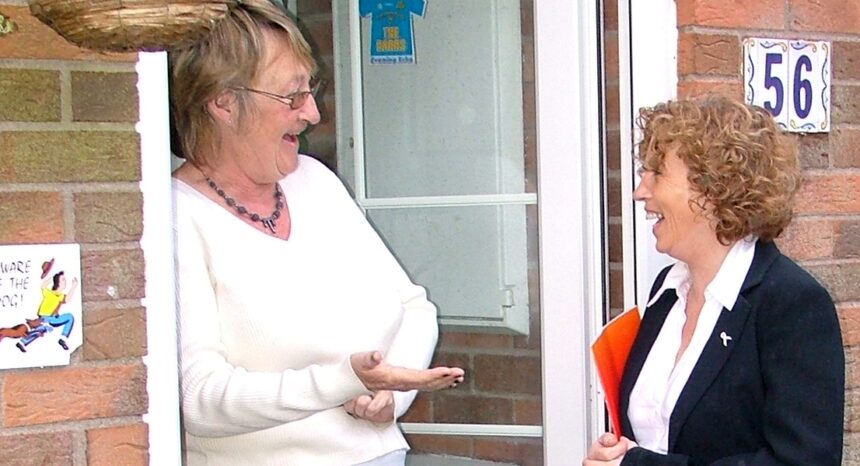Door-to-door canvassing campaigns actually work to persuade voters and sway national election outcomes – even when they don’t encourage more people to show up to the polls, according to a June 2018 article published in American Economic Review.
The article, authored by Harvard Business School assistant professor Vincent Pons, describes a nationwide voter behavior study involving the 2012 French presidential campaign, when Francois Hollande ran against then-incumbent Nicolas Sarkozy. According to the author, the paper provides “the first estimate of the effect of door-to-door canvassing on actual electoral outcomes.”
From Feb. 1 to May 6, 2012, some 80,000 volunteers knocked on 5 million doors in an effort to get French citizens to vote – and specifically to vote for Hollande, that year’s candidate of the center-left Parti Socialiste. (Spoiler alert: Hollande won the election, with 51.6 percent of the vote.)
Pons was one of three national directors of this field campaign, which provided him the opportunity to orchestrate a countrywide field experiment. On a randomly assigned basis, volunteers blanketed some precincts with door-to-door visits (the treatment groups), while leaving other precincts alone (the control groups).
“While existing experiments randomized door-to-door visits at the individual level, the scale of this campaign (five million doors knocked) enabled randomization by precinct, the level at which vote shares are recorded administratively,” Pons explains in the study, titled “Will a Five-Minute Discussion Change Your Mind? A Countrywide Experiment on Voter Choice in France.”
Pons compared and analyzed the election results of the treatment and control precincts, in order to determine the effect of canvassing on both voter turnout and candidate choice.
The “get out the vote” aspect of the canvassing campaign was not apparently effective. Door-to-door canvassing had no significant effect on the number of people who showed up to the polls. “These results are surprising, given that the campaign material and instructions, though mentioning the right-wing incumbent Nicolas Sarkozy, focused on the mobilization of left-wing nonvoters,” Pons writes.
However, the canvassing campaign increased Hollande’s vote share by 3.2 percentage points in the first round of the election, and 2.8 percentage points in the second round. “Multiplying these estimates by the fraction of French doors knocked, I obtain that the canvassing campaign accounted for approximately one-half of Hollande’s lead in the first round and one-fourth of his victory margin at the second round.”
Highlighting the power of a five-minute, in-person conversation with a potential voter, Pons concludes that even short discussions have the power to sway important decisions. “This finding may have implications that reach beyond political campaigns to persuasive communication directed at consumers, donors, or investors,” he writes.
Pons notes that most of the voters in the study had never been canvassed before, so the novelty of an in-person visit may have played a role in the success of the campaign. He also points out that France has a multi-party political system, which lends itself to a variety of viewpoints among voters. As he writes, “the diversity of political parties and platforms in France results in weaker partisan affiliations and more frequent changes in vote choice than in bipartisan contexts, such as in the United States.”
To read more about the efficacy of campaign techniques, see our posts on whether lawn signs generate votes and whether voters respond better to male versus female voices in political ads. For more information on mobilizing voters, see this post on how election timing affects voter turnout.
The image in this post by Lorraine Kingston was obtained from Flickr and is published under a Creative Commons license.

Expert Commentary